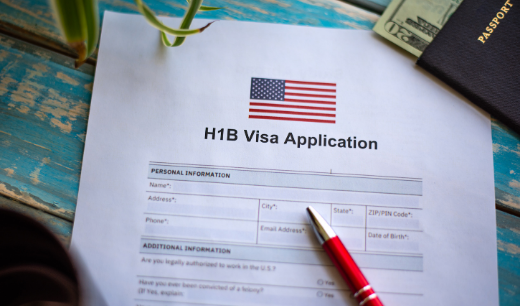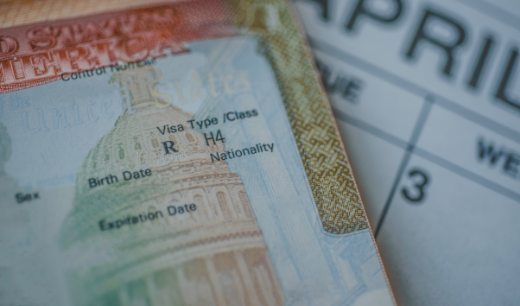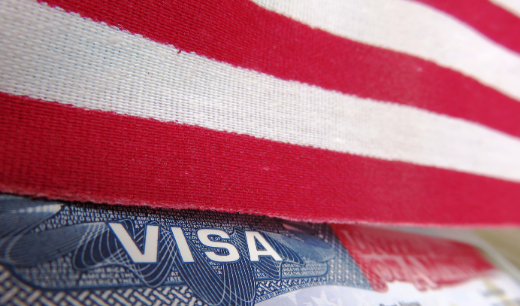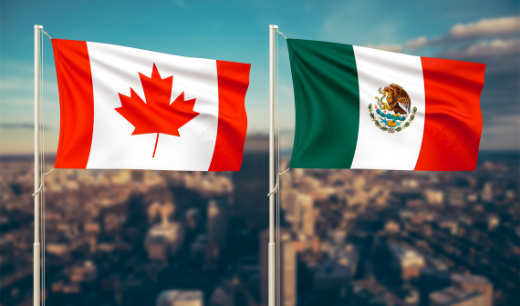LEADING BUSINESS IMMIGRATION LAW FIRM IN TEXAS
Bringing employees to the U.S. can be a frustrating and difficult process.
Whether your company is seeking to hire the most qualified candidate who lives outside the U.S. or trying to transfer an executive or manager from your foreign office, the business immigration lawyers at Davis & Associates can help.
Whether your business is a start-up, an investment purchase of an existing business, or a well-established company with a need for talent that can only be found outside the U.S., we have the experience needed to find an effective solution.
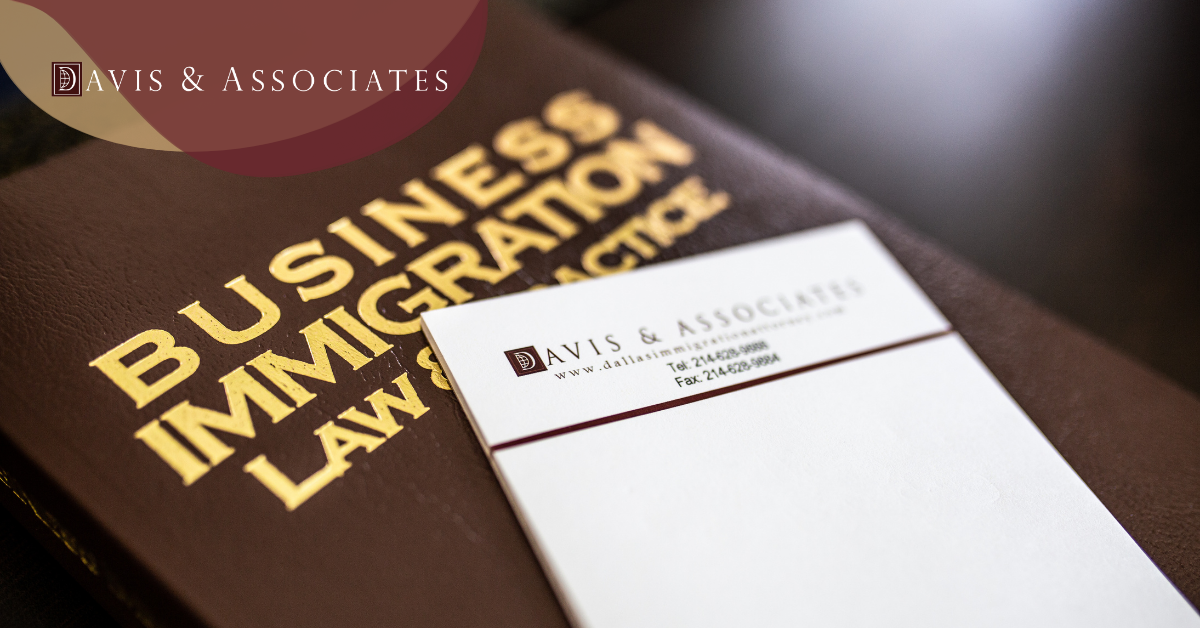
We Care About Your Business, Not Files
We strive to be the best business visa attorneys in Texas, period.
If you or an employee is trying to get into the United States through a work visa or green card, contact our caring and expert work visa attorneys by scheduling a free consultation.
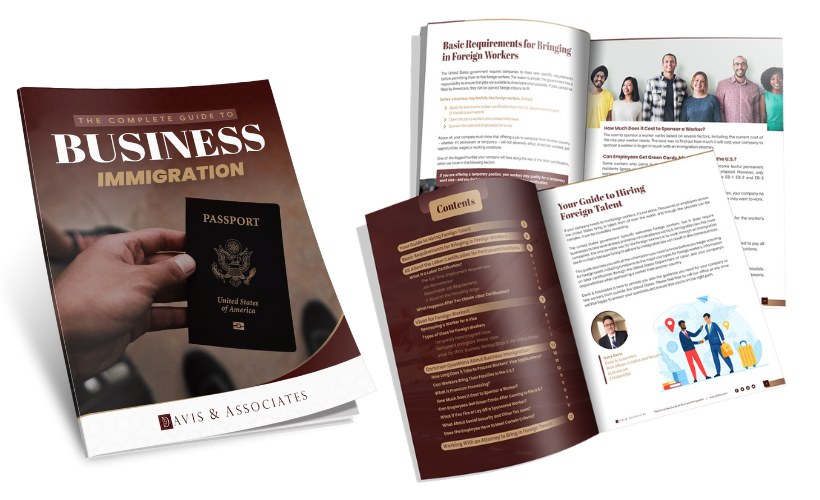
Free Business Immigration E-Book
This ebook is packed with information on how to navigate the complex and ever-changing landscape of business immigration law. You’ll learn about the different types of visas available, how to find the right candidates, and what steps you need to take to get them working for you as quickly as possible.
BUSINESS IMMIGRATION LAW FIRM SERVICES
For many people, the easiest way to get a US Immigration Visa or Green Card is through Business Immigration Sponsorship.
Some kinds of business sponsorship include:
EB-5 Visa - Emploment Creation Visa
The Employment Creation Visa, or EB5 Investor Green Card, calls for the individual to spend at least $1 million in a U.S. company as well as create ten brand-new full-time positions. In some situations, the financial investment can be as low as $500,000. Learn More!
H-4 Visa - Dependent Worker Visa
If you’re a family member of an H-1B visa holder who works in the United States, you may be able to come to the U.S. on an H-4 visa. Talk to a business immigration attorney about your situation so you can take the appropriate steps to join your family member in the U.S.
U.S. Business Visa Attorneys for Workers & Companies in Texas
For Workers...
If you're trying to obtain a work visa or green card, Davis & Associates are your work visa attorneys of choice in Houston and Dallas Metroplex. Our work visa lawyers provide expert legal counsel for all aspects of business immigration law, including:
- employment-sponsored immigration
- H1B employment visas
- EB5 investor green cards
- temporary work visas
- permanent residence
- consular visa processing
- waivers
- appeals

For Companies...
Our business immigration law firm and experienced work visa lawyers are focused exclusively on the practice of US Immigration Law. We advise businesses of all sizes on employer compliance issues and offer auditing and educational services to minimize their exposure to discrimination suits and audits by the government.
We help businesses (and individuals) with:
- Employer compliance
- Green cards through employment
- Business/work visas
- EB-5 Employment creation green cards
- H-1B Employment visas
Corporate Immigration Attorneys for Your Business
Navigating the hazardous waters of U.S. Immigration Law is becoming more and more difficult for employers. The safe harbors that were once in place to protect employers from consequences for hiring unauthorized workers are failing. Raids on employers are becoming more frequent, with a higher incident of management-level employees going to prison for hiring unauthorized workers. Our corporate immigration law firm can help minimize risk.
Large companies (including Tyson Foods, Wal-Mart, and numerous other businesses throughout the US) have been raided by Immigration and Customs Enforcement (ICE) and have thrown the companies into litigation and the local communities into disarray. Penalties for hiring illegal workers range from stiff fines to jail time.
Overly-zealous employers who refuse to hire someone they believe has no legal status to work in the US may face discrimination lawsuits – even if the worker was in fact not authorized to work in the USA. Employers and their human resources staff much balance the requirements to only hire those authorized to work with the equal protection requirements of the Constitution and federal and state laws.
How does a business protect itself from the potential exposure from discrimination lawsuits and from enforcement measures by Immigration and Customs Enforcement (ICE) and the US Department of Labor (DOL)?
It starts by having a legal team on your side whose focus is on immigration law (a general practice attorney is not the best option - you need someone who lives and breathes immigration law to have your back). Our expert work visa attorneys are focused exclusively on the practice of US Immigration Law. They live and breathe it. In fact, the founder of the firm, immigration attorney Garry Davis, is board-certified in Immigration and Nationality Law by the Texas Board of Legal Specialization.
Our business immigration attorneys advise businesses of all sizes on employer compliance issues and offer auditing and educational services to minimize the business' exposure to discrimination lawsuits and audits by the government.
What if My Business is Being Audited by ICE or DOL?
In the event of an audit by Immigration and Customs Enforcement (ICE) or the Department of Labor (DOL), we offer legal representation to facilitate prompt resolution of the audit with as little inconvenience as possible.
EB-5 EMPLOYMENT CREATION INVESTOR VISA
High net worth individuals who are looking for business immigration options may consider an Employment Creation Visa, or EB-5 Investor Visa. This is an investor visa that the business immigration attorneys in our firm have helped many clients with. Learn about an EB-5 Investor Green Card or Employment Creation Visa or read business immigration attorney Garry L. Davis' recent article "Introduction to the Employment Creation Visa (EB-5)".
H-1B EMPLOYMENT VISA
For many people, the easiest way to get a US Immigration Visa or Green Card is through employment immigration or "work visa".
The H-1B employment visa allows for a person to be an employee of a sponsoring employer to perform duties that require “specialized knowledge.” That means that the duties of the job offered to the H-1B employee must require someone with a higher education and/or specialized work experience. Learn more about H-1B Employment Visa pages or contact an expert work visa attorney here!
GREEN CARD THROUGH EMPLOYMENT HELP FROM CORPORATE IMMIGRATION LAW FIRM
One of the ways for a person to immigrate to the US or obtain a green card to live and work in the US is through employment sponsorship.
Immigration through employment, or “employment-based” immigration, is very common – so common in fact that there is a serious backlog in the available green cards through employment sponsorship. Companies sponsor their employees or potential employees for permanent residence.
For most categories, getting a green card through employment takes several years to process to the actual green card.

That being said, employment-based green card sponsorship is a process that works and is effective for those who are willing to try and have the flexibility to be patient with the process.
Immigration through employment starts with a process called Labor Certification. For a Labor Certification application, an employer must first obtain a salary requirement from the Department of Labor, called a Prevailing Wage Determination. Once we have the required salary, the employer must recruit for the position as though it were available, by running advertisements in the local newspaper and online. As long as no qualified US workers apply for the job, a Labor Certification application is filed with the Department of Labor.
The Department of Labor reviews the recruitment efforts and the employee’s qualifications for the position. If the case was handled to its satisfaction, the Department of Labor approves the application.
The second step in the employment-based green card process is a petition with the US Citizenship and Immigration Services (USCIS) office. The petition must include the approved and executed Labor Certification Application, proof of the employee’s education and experience, and proof that the employer has the ability to pay the required wage to the employee upon approval of the green card. If USCIS is satisfied on those points, the petition should be approved.
The final step in obtaining permanent residence through employment sponsorship is the actual green card application for the employee. This stage cannot be filed unless the quota is available for the category of employment-based green card. The Visa Bulletin is a report that comes out each month from the US Department of State, and can be found at travel.state.gov. That report advises what cases can start the final process for the employment-based green card, depending on when the Labor Certification was filed with the Department of Labor.
Once the work visa is available, the employee can proceed with obtaining the green card. The green card through employment can be processed either in the US through Adjustment of Status, or through the US Consulates, called Immigrant Visa Processing. Which option is preferable or available depends entirely on the employee’s background, US immigration history, employment history and other factors.
Davis & Associates is a corporate immigration law firm in the Dallas & Houston area. Our work visa lawyers can answer your business immigration questions.
Learn The Top 5 Issues That Require A Business Immigration Law Firm
BUSINESS IMMIGRATION ATTORNEYS CAN HELP WITH WORK VISAS
 Bringing employees to the US can be a frustrating and difficult process. Whether your business is seeking to hire the most qualified candidate, who happens to be from outside the US, or trying to transfer in an executive or manager from your foreign office, the business immigration lawyers at the Law Offices of board certified immigration attorney, Garry L. Davis can help.
Bringing employees to the US can be a frustrating and difficult process. Whether your business is seeking to hire the most qualified candidate, who happens to be from outside the US, or trying to transfer in an executive or manager from your foreign office, the business immigration lawyers at the Law Offices of board certified immigration attorney, Garry L. Davis can help.
Our business immigration law firm focuses exclusively on practicing US Immigration law. Garry Davis, the founder of the firm, is certified by the Texas Board of Legal Specialization in Immigration and Nationality Law. Our work visa lawyers represent corporate clients ranging in size from one employee to hundreds. Whether your business is a start-up, an investment purchase of an existing business, or a well-established company with a need for talent that can only be found outside the US, our immigration attorneys can help.
Our work visa lawyers have successfully filed intracompany transfer work visas for executives, managers and those employees with proprietary knowledge of the company’s offerings (L-1A and L-1B visas). We also file for professional worker visas and work visas provided for under the NAFTA treaty (H-1B and TN-1). For nationals of those countries with whom the US has a treaty of trade and friendship that provides for them, we file E-1 trader and E-2 investor visas. If you are a religious organization and wish to bring a foreign clergyman to head up or start an ethnic congregation, we file R-1 religious worker visas.
Once the work visa holder has made it to the US, there are various options for allowing that person to become a permanent resident as well. Our work visa attorneys provide assistance in going through those processes as well, whether the candidate is an individual of extraordinary ability, a multi-national manager or executive, a high net worth investor, or an outstanding professor or researcher. Our business immigration attorneys also process applications for labor certification. If you are an investor, executive, manager or employer that has a need for work visa processing, the business immigration lawyers in our office will be happy to provide you the assistance you need.





